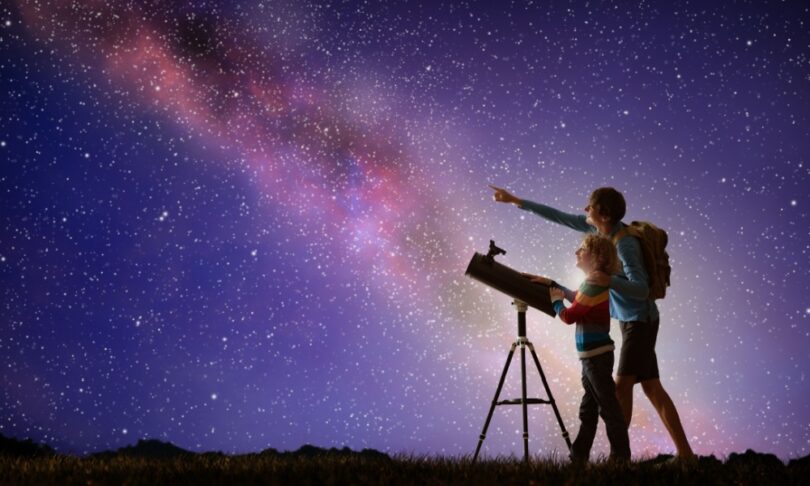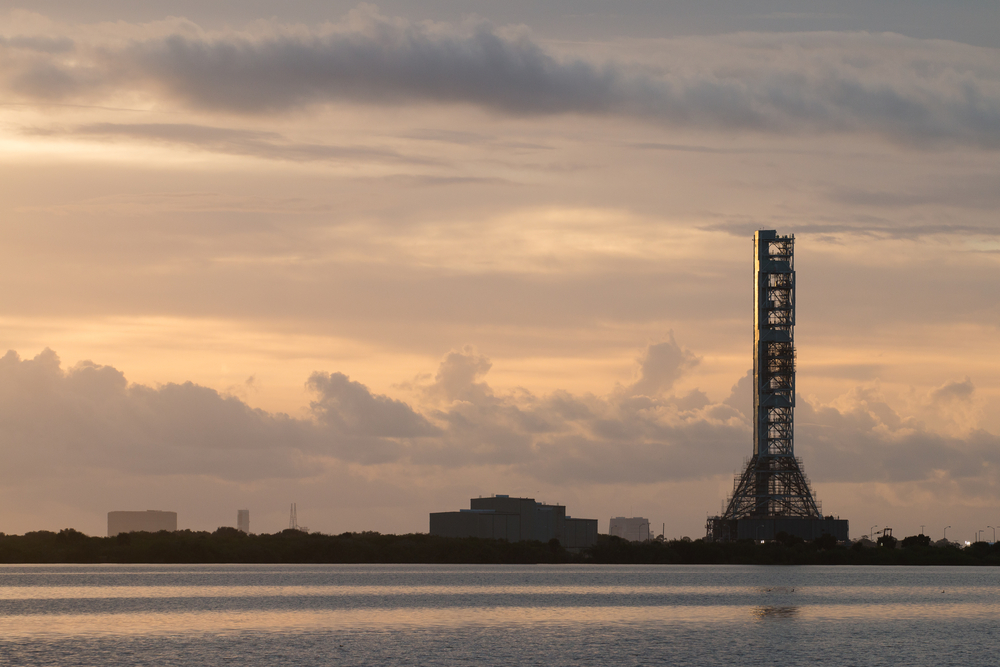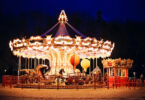Humans have always had a deep fascination with staring up at the stars. Indeed, when we do lift our eyes to the heavens, we’re continuing an act that goes back thousands of years. Whether you’re looking for Pluto, the stars, or or entire galaxies, looking up into the night sky is a past time that’s full of wonder and appreciation.
And with Carl Sagan Day around the corner — a celebration of the famed astronomer’s work in inspiring millions to look up and wonder — there’s no better time to embark on a celestial weekend getaway or take your little ones on an educational trip across the galaxy! We’ve scoped out some of the best cities for budding astronomers. So get your cameras and Instagram feeds ready, because you’re in for a star-studded vacation.
Pittsburgh, Pennsylvania
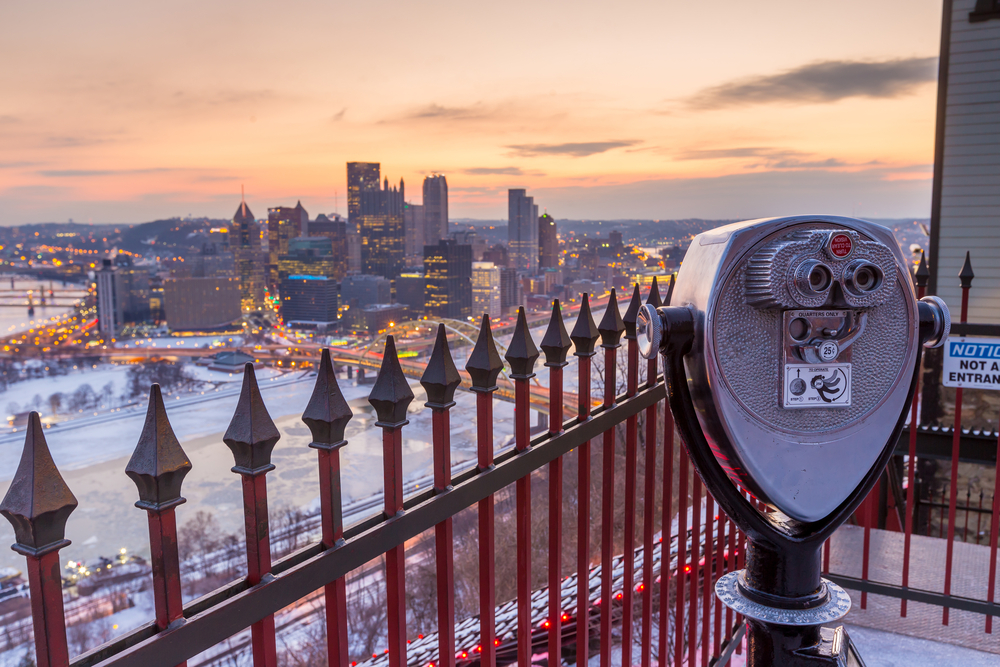
Pittsburgh, Pennsylvania
Every aspiring astronaut has to start somewhere – and your journey can begin at the Carnegie Science Center in Pittsburgh. From a two-story replica of the International Space Station to fascinating facts about globular clusters, nebulas, and planets, this place is jam-packed info about what lies beyond our little planet. See space for yourself with the Buhl Planetarium’s 16-inch Meade LX200 Schmidt-Cassegrain telescope. You’ll be able to check out the surface of the moon and a handful of planets as expert stargazers share key details about our universe. You’ll even enjoy a stellar fifth-floor view of downtown Pittsburgh.
Other nearby spots to stare up at the heavens include the Allegheny Observatory at Riverview Park, which is frequented both by visitors and university astronomical researchers, and the Wagman Observatory, which houses the world-class Manka Memorial telescope and is the site of Star Parties hosted by the Amateur Astronomers Association of Pittsburgh.
Green Bank, West Virginia
 The tiny community of Green Bank is located in the sloping hills of the Allegheny Mountains of West Virginia, and is a veritable holy of holies for budding astronomers. Green Bank’s secluded setting and tiny population belie its immense importance in the study of astronomy. The community is the headquarters of the Green Bank Observatory, a research center that hosts the world’s largest fully steerable radio telescope. Along with being involved in SETI — the Search for Extraterrestrial Intelligence — the Green Bank Observatory has led countless research endeavors that have mapped out everything from pulsars to neutron stars.
The tiny community of Green Bank is located in the sloping hills of the Allegheny Mountains of West Virginia, and is a veritable holy of holies for budding astronomers. Green Bank’s secluded setting and tiny population belie its immense importance in the study of astronomy. The community is the headquarters of the Green Bank Observatory, a research center that hosts the world’s largest fully steerable radio telescope. Along with being involved in SETI — the Search for Extraterrestrial Intelligence — the Green Bank Observatory has led countless research endeavors that have mapped out everything from pulsars to neutron stars.
Here you will learn how astronomers use radio waves to explore the universe. The observatory is also home to the Science Center, an institution committed to enlightening the public on the wonders of astronomy. Exhibits focus on a myriad of different topics, including the expansion of the universe and the chemical and atmospheric composition of celestial objects in our galaxy and throughout the universe.
Fort Davis, Texas
 For those who dream of exploring the night sky, Fort Davis, Texas, offers a welcome escape. One of Fort Davis’s biggest attractions is the McDonald Observatory atop Mt. Locke. Not only does this celebrated astronomical research center boast the 362-inch Hobby-Eberly Telescope — one of the largest ever constructed — but the surrounding area gets really dark at night, making it a prime spot to stargaze. Going with your significant other? Share a telescope at one of the observatory’s Star Parties on Tuesdays, Fridays, and Saturdays. Continue your astronomical trip to Texas at the serene Davis Mountains State Park, where travelers of every age can lie back and observe the brilliant night sky.
For those who dream of exploring the night sky, Fort Davis, Texas, offers a welcome escape. One of Fort Davis’s biggest attractions is the McDonald Observatory atop Mt. Locke. Not only does this celebrated astronomical research center boast the 362-inch Hobby-Eberly Telescope — one of the largest ever constructed — but the surrounding area gets really dark at night, making it a prime spot to stargaze. Going with your significant other? Share a telescope at one of the observatory’s Star Parties on Tuesdays, Fridays, and Saturdays. Continue your astronomical trip to Texas at the serene Davis Mountains State Park, where travelers of every age can lie back and observe the brilliant night sky.
Pasadena, California
 Pasadena, California is home to several institutions that were of major importance in Carl Sagan’s life and humanity’s quest to understand the stars. As one of the greatest scientific minds of his generation, Sagan frequently served as an advisor to NASA, particularly for their Voyager and Viking programs. NASA’s Jet Propulsion Laboratory celebrates this aspect of Sagan’s life in tours of their cutting-edge research center. Guests can step foot in Mission Control and watch NASA scientists hard at work in the Space Assembly area. The facility also has several life-size models of NASA spacecraft and probes, including one from the Voyager program.
Pasadena, California is home to several institutions that were of major importance in Carl Sagan’s life and humanity’s quest to understand the stars. As one of the greatest scientific minds of his generation, Sagan frequently served as an advisor to NASA, particularly for their Voyager and Viking programs. NASA’s Jet Propulsion Laboratory celebrates this aspect of Sagan’s life in tours of their cutting-edge research center. Guests can step foot in Mission Control and watch NASA scientists hard at work in the Space Assembly area. The facility also has several life-size models of NASA spacecraft and probes, including one from the Voyager program.
While in California, astronomy lovers will also want to check out Caltech’s Palomar Observatory, one of the most important astronomical research facilities in the United States. The Palomar Observatory is home to the famed Hale Telescope, one of the largest in the world.
New York City
 In the “City That Never Sleeps,” it’s no surprise that New Yorkers are fascinated by the night sky and what lies millions of light years away from our watery world. A fantastic place to start is the American Museum of Natural History’s Hayden Planetarium, home to the immersive space how, Dark Universe, where visitors can dive into the mysteries of cosmic expansion, black holes, and dark matter, all backed by the latest in astronomical research. Then, take all of that newfound knowledge to the Amateur Astronomers Association of New York, a dedicated community that hosts regular stargazing meet-ups in parks across the five boroughs, providing telescopes and expertise to help curious New Yorkers get closer to the stars.
In the “City That Never Sleeps,” it’s no surprise that New Yorkers are fascinated by the night sky and what lies millions of light years away from our watery world. A fantastic place to start is the American Museum of Natural History’s Hayden Planetarium, home to the immersive space how, Dark Universe, where visitors can dive into the mysteries of cosmic expansion, black holes, and dark matter, all backed by the latest in astronomical research. Then, take all of that newfound knowledge to the Amateur Astronomers Association of New York, a dedicated community that hosts regular stargazing meet-ups in parks across the five boroughs, providing telescopes and expertise to help curious New Yorkers get closer to the stars.
Flagstaff, Arizona
 Just as Sagan has influenced generations of scientists in their study of the cosmos, he himself was inspired by the work and theories of 19th-century astronomer Percival Lowell. Lowell, best known for his groundbreaking research on Mars, founded the Lowell Observatory in Flagstaff, Arizona, in 1894. Today, it remains one of the largest scientific research centers in the Southwest. The Lowell Observatory achieved international recognition in 1930 when scientists based at the institute discovered Pluto.
Just as Sagan has influenced generations of scientists in their study of the cosmos, he himself was inspired by the work and theories of 19th-century astronomer Percival Lowell. Lowell, best known for his groundbreaking research on Mars, founded the Lowell Observatory in Flagstaff, Arizona, in 1894. Today, it remains one of the largest scientific research centers in the Southwest. The Lowell Observatory achieved international recognition in 1930 when scientists based at the institute discovered Pluto.
A perennially popular spot for stargazing, the Lowell Observatory offers many exciting tours and exhibitions for those with a love of space and astronomy. In addition to exhibits on the discovery and exploration of Pluto, the observatory also operates the Clark Telescope, which Sagan visited in an episode of Cosmos. The Clark Telescope was used by scientists from NASA to map out the surface of the Moon for the Apollo program. Apollo astronauts even peered through the telescope’s lens as part of their training regimen to help them get a greater understanding of the Moon’s rugged terrain.
Los Angeles
 Dubbed “Southern California’s gateway to the cosmos,” the Griffith Observatory atop Mount Hollywood offers stunning views of the cosmos, not to mention the entire city of Los Angeles. With free telescopes available for public use each evening and expert on-site guides, this observatory is a hotspot for unofficial crash courses in stargazing. Right next to Hollywood Boulevard stands Runyon Canyon Park, a sprawling, 130-acre piece of land that offers Instagram-worthy city views and the opportunity for a little hike.
Dubbed “Southern California’s gateway to the cosmos,” the Griffith Observatory atop Mount Hollywood offers stunning views of the cosmos, not to mention the entire city of Los Angeles. With free telescopes available for public use each evening and expert on-site guides, this observatory is a hotspot for unofficial crash courses in stargazing. Right next to Hollywood Boulevard stands Runyon Canyon Park, a sprawling, 130-acre piece of land that offers Instagram-worthy city views and the opportunity for a little hike.
Roswell, New Mexico
 Anyone with a passion for science fiction will tell you that Roswell, New Mexico is one of the most important places in UFO lore. Roswell is at the center of many conspiracy theories alleging that a crashed alien spacecraft was recovered at a ranch just outside of the city at the dawn of the Atomic Age in 1947. While visitors are certain to find many an establishment catering to all things involving flying saucers and little green men, travelers with an interest in astronomy will also find much to love in the city.
Anyone with a passion for science fiction will tell you that Roswell, New Mexico is one of the most important places in UFO lore. Roswell is at the center of many conspiracy theories alleging that a crashed alien spacecraft was recovered at a ranch just outside of the city at the dawn of the Atomic Age in 1947. While visitors are certain to find many an establishment catering to all things involving flying saucers and little green men, travelers with an interest in astronomy will also find much to love in the city.
Roswell is the home base of the Robert H. Goddard Planetarium, a facility that specializes in helping the public better understand astronomy and the importance of space science. A division of the Roswell Museum, the Goddard Planetarium lets guests experience the wonders of the cosmos in a state-of-the-art digital theater. Boasting a diverse set of documentary films, the planetarium takes astronomy lovers on a whirlwind journey through the Milky Way. Beginning in the well-known confines of our Solar System, guests can travel through space and see the beating heart of the galaxy in the awe-inspiring Orion Nebula.
Cocoa, Florida
Astronomy buffs and beginners alike will be star-struck by Florida’s Space Coast in Cocoa. Start your day touring one of Florida’s most beloved attractions, the Kennedy Space Center, which offers a 140,000-acre celebration of the cosmos. Experience a realistic simulation of a space shuttle launch, gaze up at 3D space footage, or take a stroll across a garden teeming with capsules and rockets. After you’ve witnessed what it takes to become a real astronaut, fly over to the Planetarium and Observatory at Eastern Florida State College. Featuring a star theater, public observatory, art gallery, and interactive exhibits, this facility is a solid way to end an afternoon with the stars.
Anchorage, Alaska
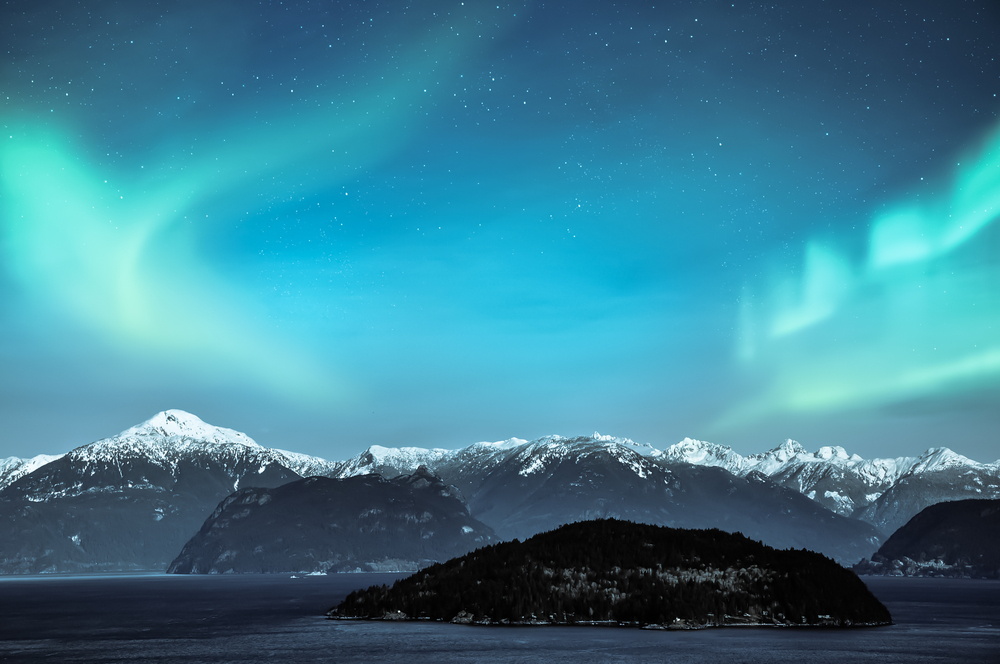
Alaska seems out of the way – unless you live in Alaska, of course! But this trek is more than worth making. Ever wonder why the sky is blue or Mars is red? Dream of gazing up at the Northern Lights glistening across the Article Circle? Your expedition begins at the Anchorage Museum’s Thomas Planetarium, where you’ll have the chance to experience this and much more. If you’re feeling particularly adventurous, catch a bus or train to Denali National Park and Preserve for unforgettable views of the aurora.
You Might Also Enjoy: Lights Out! Dark Places in the USA That Are Just Perfect for Stargazing
Ithaca, New York
 Ithaca was one of the most important places in Dr. Sagan’s life. For nearly 30 years, Sagan taught at Cornell University, where he helped mold the minds of the next generation of astronomers and peered into the mysteries of the cosmos. After his death in 1996, the people of Ithaca honored the legacy of the legendary astronomer with the creation of the Sagan Planet Walk. A 1,200-meter tour through the heart of Downtown Ithaca, the Sagan Planet Walk is a scaled down model of the Solar System that shows the immensity of our planetary neighborhood.
Ithaca was one of the most important places in Dr. Sagan’s life. For nearly 30 years, Sagan taught at Cornell University, where he helped mold the minds of the next generation of astronomers and peered into the mysteries of the cosmos. After his death in 1996, the people of Ithaca honored the legacy of the legendary astronomer with the creation of the Sagan Planet Walk. A 1,200-meter tour through the heart of Downtown Ithaca, the Sagan Planet Walk is a scaled down model of the Solar System that shows the immensity of our planetary neighborhood.
Beginning with the Sun in Ithaca Commons, visitors can follow the Sagan Planet Walk to the dwarf planet Pluto, which is located north at the Sciencenter. Along the way, guests can stop at nine information-packed obelisks that represent the planets and the asteroid belt to learn more about the celestial objects that make up our Solar System.
FAQs:
Q: What’s the best way to find upcoming events at these observatories?
A: Many observatories list events on their websites, including star parties, guided tours, and telescope viewing nights. Following their social media pages or subscribing to newsletters also helps you stay updated.
Q: Do I need to reserve tickets in advance?
A: Yes, for popular observatories like McDonald Observatory and Kennedy Space Center, advance reservations are recommended, especially for special events or weekends.
Q: Are there age restrictions for observatory events?
A: Most observatories welcome all ages, but some events or stargazing equipment might have age recommendations. Check with each location for family-friendly options.
Q: What should I bring for a stargazing experience?
A: Bring a flashlight with a red filter (to preserve night vision), comfortable outdoor clothing, binoculars if you have them, and a camera for any astrophotography moments.
Q: Are there guided tours available at these locations?
A: Yes, many observatories offer guided tours to enhance the experience, providing insights into telescopes, star formations, and other celestial phenomena.
Q: Can I visit these sites during the daytime?
A: Absolutely! Most observatories offer daytime tours or planetarium shows, where you can explore astronomy exhibits and learn about the night sky in interactive ways.
Q: Is photography allowed during observatory visits?
A: Generally, yes, but some observatories have restrictions on flash photography to protect equipment or improve visibility for guests. Always check photography guidelines with the venue.
Do you have any other cities you’d add to the list? Have you been to any of these top attractions? Let us know in our comments section below!

